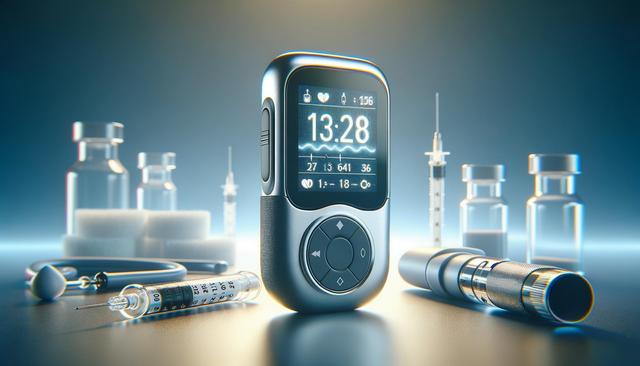Understanding Diabetes Monitoring Devices
Diabetes monitoring devices have evolved significantly in recent years, offering individuals with diabetes more control and insight into their blood glucose levels. Whether you are newly diagnosed or have been managing diabetes for years, choosing a device that fits your lifestyle and health needs is essential. These devices range from traditional finger-prick glucometers to more advanced continuous glucose monitoring (CGM) systems. Each type has its benefits, and the right choice often depends on various factors including frequency of testing, comfort, and budget.
Traditional glucometers are widely used and typically involve a lancet to draw a small blood sample. They are usually lower in cost and easy to use but require manual input and frequent testing throughout the day. On the other hand, CGM systems offer real-time glucose tracking with sensors inserted under the skin, transmitting data to a display device or smartphone. These are particularly suitable for individuals who need to monitor their levels continuously due to fluctuating glucose trends or hypoglycemia unawareness.
Key Features to Consider
When evaluating diabetes monitoring devices, several features can help determine which one aligns best with your health goals and daily habits. Here are some important aspects to consider:
- Accuracy and reliability: Devices should provide consistent readings to help guide insulin dosing and dietary decisions.
- Ease of use: Look for user-friendly interfaces, clear displays, and simple testing procedures.
- Data tracking: Many modern devices sync with apps to log your readings, enabling better long-term management and sharing with healthcare providers.
- Wearability: For CGMs, consider comfort and how discreet the device is when worn daily.
- Battery life and maintenance: Devices with longer battery life or rechargeable options can reduce the hassle of frequent replacements.
Understanding your personal needs—such as whether you participate in sports, travel frequently, or have irregular schedules—can also influence your choice. Devices with smartphone compatibility and cloud storage may offer added convenience for those on the go.
Comparing Top Diabetes Monitoring Options
With many devices available on the market, comparing their features side by side can clarify which may be the most suitable for your situation. While we can’t name specific brands, here are some commonly found types and what they typically offer:
- Traditional Glucometers: Affordable, portable, and ideal for users who prefer manual control over their monitoring.
- Continuous Glucose Monitors: Provide ongoing data, trend alerts, and less frequent finger pricks, often preferred by those with more complex diabetes management needs.
- Flash Glucose Monitoring Systems: Similar to CGMs but require scanning the sensor manually to get a reading, offering a balance between affordability and real-time data.
These devices are often available with a range of features such as water resistance, customizable alerts, and integration with insulin pumps. Be sure to consult with your healthcare provider to ensure compatibility with your treatment plan and to receive guidance on proper usage.
Benefits of Consistent Glucose Monitoring
Maintaining regular glucose monitoring is a cornerstone of effective diabetes management. Consistent tracking helps to:
- Identify patterns and trends in blood sugar levels
- Prevent complications by managing highs and lows more effectively
- Support medication and insulin adjustments
- Inform dietary and exercise decisions
For people with both type 1 and type 2 diabetes, using a reliable monitoring device can improve quality of life by reducing uncertainty and promoting proactive management. Many users find that having access to real-time data empowers them to make more informed choices throughout the day. This can lead to better glucose control and potentially fewer episodes of hyperglycemia or hypoglycemia.
Moreover, digital advancements in these devices allow for seamless data sharing with healthcare professionals. This collaborative approach aids in refining treatment plans and enhances patient engagement. If you’re managing diabetes, incorporating a dependable monitoring device into your routine is a practical step toward better health outcomes.
Choosing the Right Device for Your Needs
Selecting the right diabetes monitoring device depends on a combination of medical guidance and personal preference. Start by evaluating your daily routine: Do you need a device that works well during exercise or travel? Are you looking for something discreet or one that offers detailed analytics?
Consider discussing these questions with your healthcare provider:
- How often do you need to check your glucose levels?
- Do you experience frequent blood sugar fluctuations?
- Are you comfortable with wearable technology?
- Do you prefer a device that integrates with other diabetes management tools?
Answering these can help narrow down the field and lead to a decision that supports your long-term health. It’s also important to review insurance coverage or assistance programs that may offset some of the cost, especially with more advanced devices.
Ultimately, the goal is to find a monitoring solution that you can use consistently and confidently. Whether that means sticking with a simple glucometer or transitioning to a more data-rich CGM system, the right device will support your efforts toward stable glucose levels and improved overall wellness.
Conclusion: Empowering Your Diabetes Management
Choosing a diabetes monitoring device is a personal decision that should align with your lifestyle, medical needs, and comfort level. With the range of options available today, from traditional glucometers to advanced CGM systems, there’s likely a device that fits your unique situation. Prioritizing features like accuracy, ease of use, and data tracking can guide you toward a more tailored solution. Most importantly, working with your healthcare provider ensures that your choice supports your overall management plan. By integrating the right technology into your routine, you take a proactive step toward more informed and confident diabetes care.




Leave a Reply